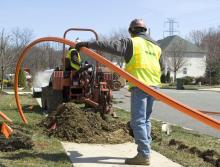Study: Low Income LA County Neighborhoods Pay More for Internet Service Than Wealthier Neighborhoods
While a racially-charged controversy swirls loudly around the Los Angeles City Council, a new study lays bare how low-income communities of color are impacted by the quiet business decisions of the region’s monopoly Internet service provider.
Slower and More Expensive/Sounding the Alarm: Disparities in Advertised Pricing for Fast, Reliable Broadband details how Charter Spectrum “shows a clear and consistent pattern of the provider reserving its best offers - high speed at low cost - for the wealthiest neighborhoods in LA County.”
Authored by Digital Equity LA, a coalition of more than 40 community-based organizations, not only highlights how economically vulnerable households in LA County pay more for slower service than those in wealthy neighborhoods, it also provides evidence for how financially-strapped households are also saddled with onerous contracts and are rarely targeted by advertisements for Charter Spectrum’s low cost plans.
A leading voice behind the Digital Equity LA initiative – Shayna Englin, Director of the Digital Equity Initiative at the California Community Foundation (CCF) – notes that higher poverty neighborhoods (which tend to be mostly made up of people of color) pay anywhere from $10 to $40 more per month than mostly white, higher-income neighborhoods for the exact same service.




